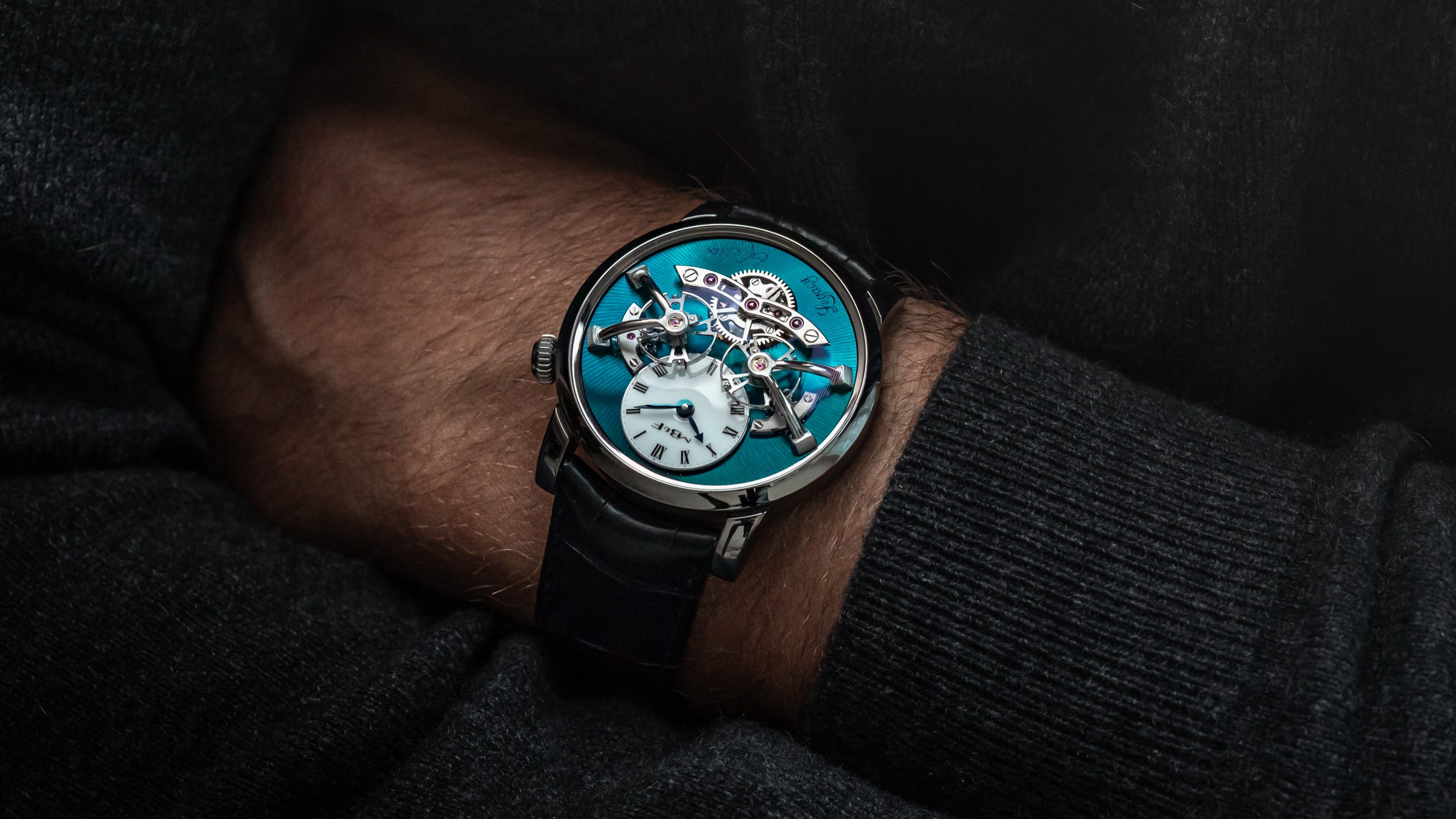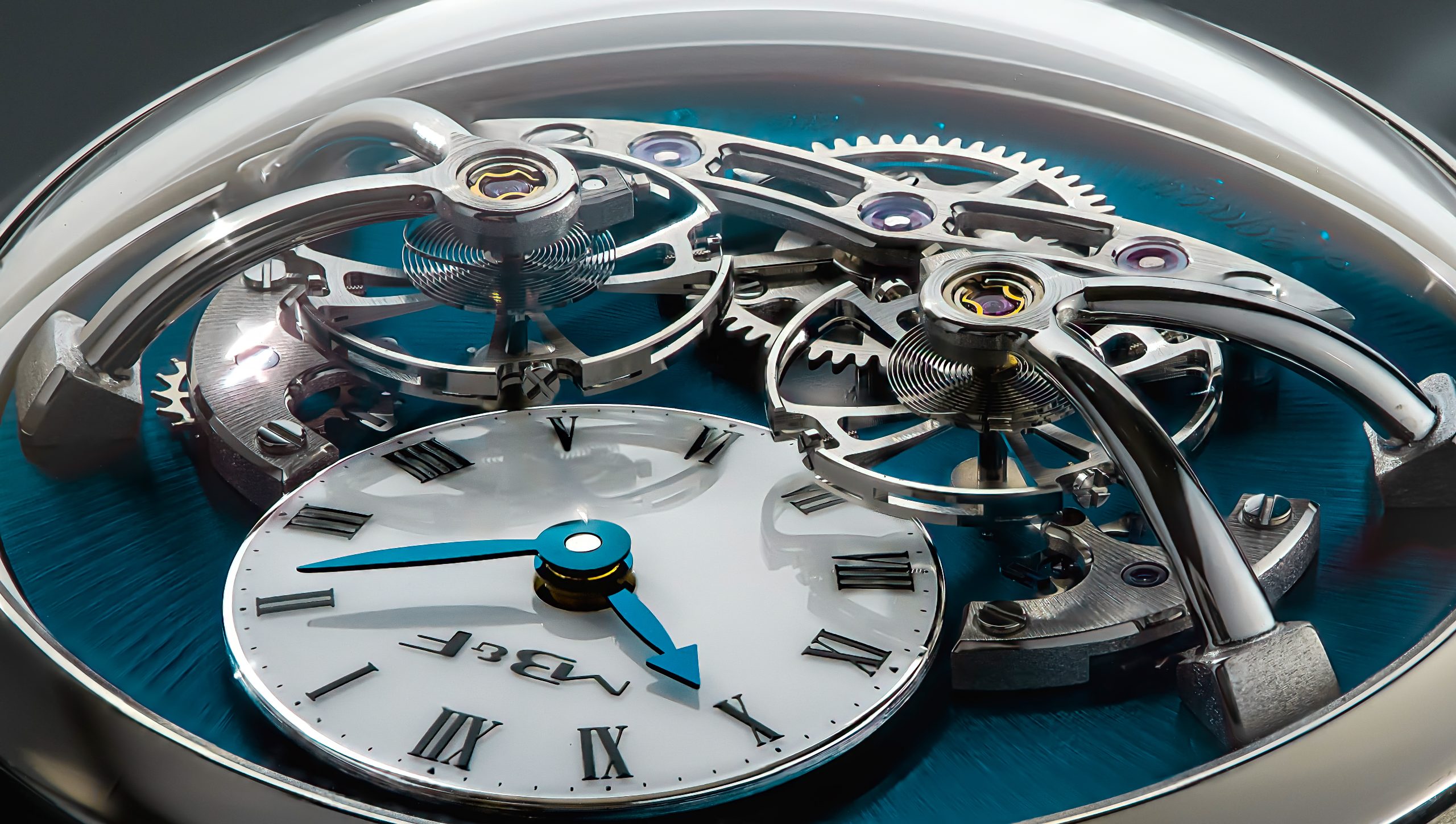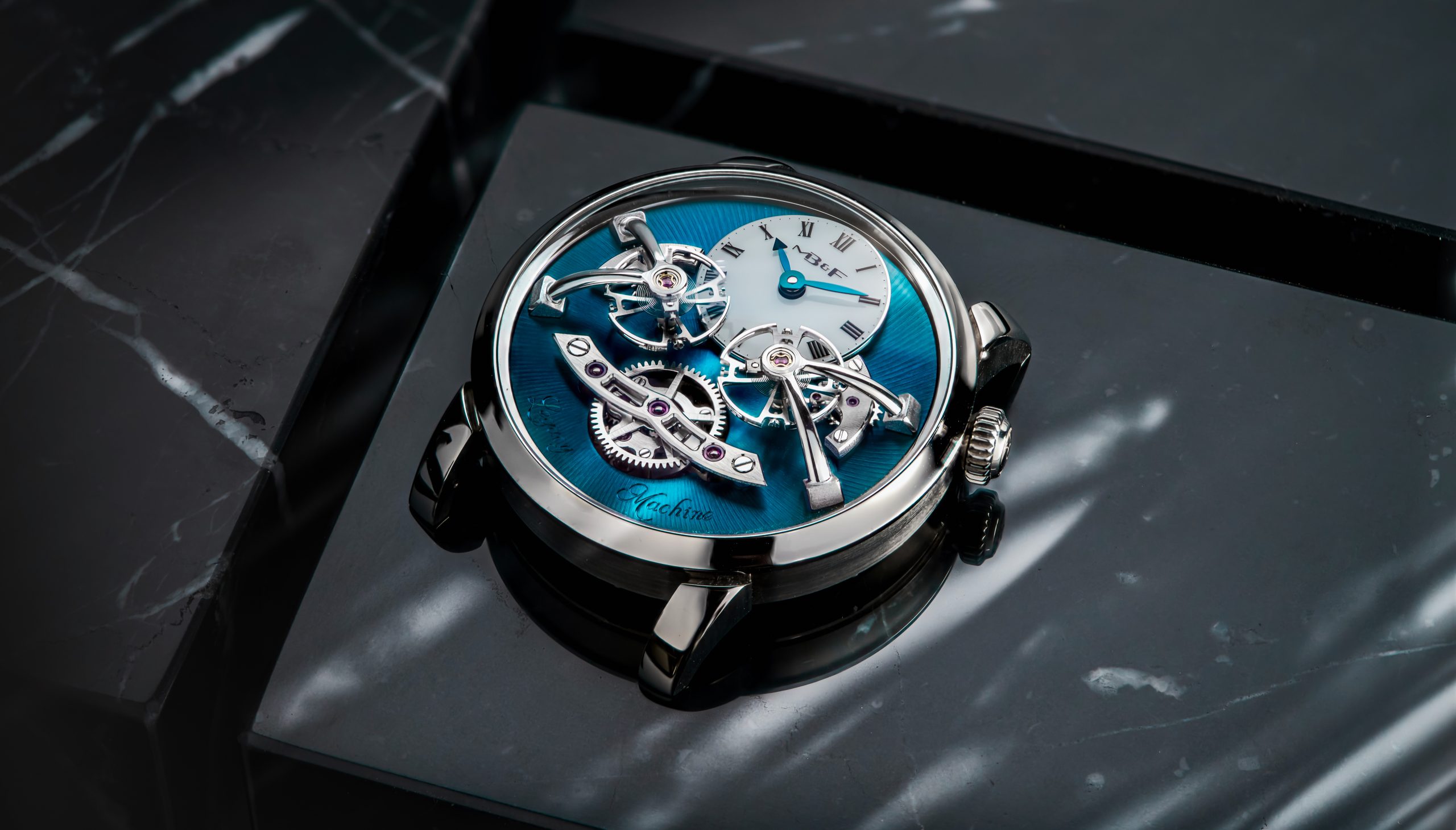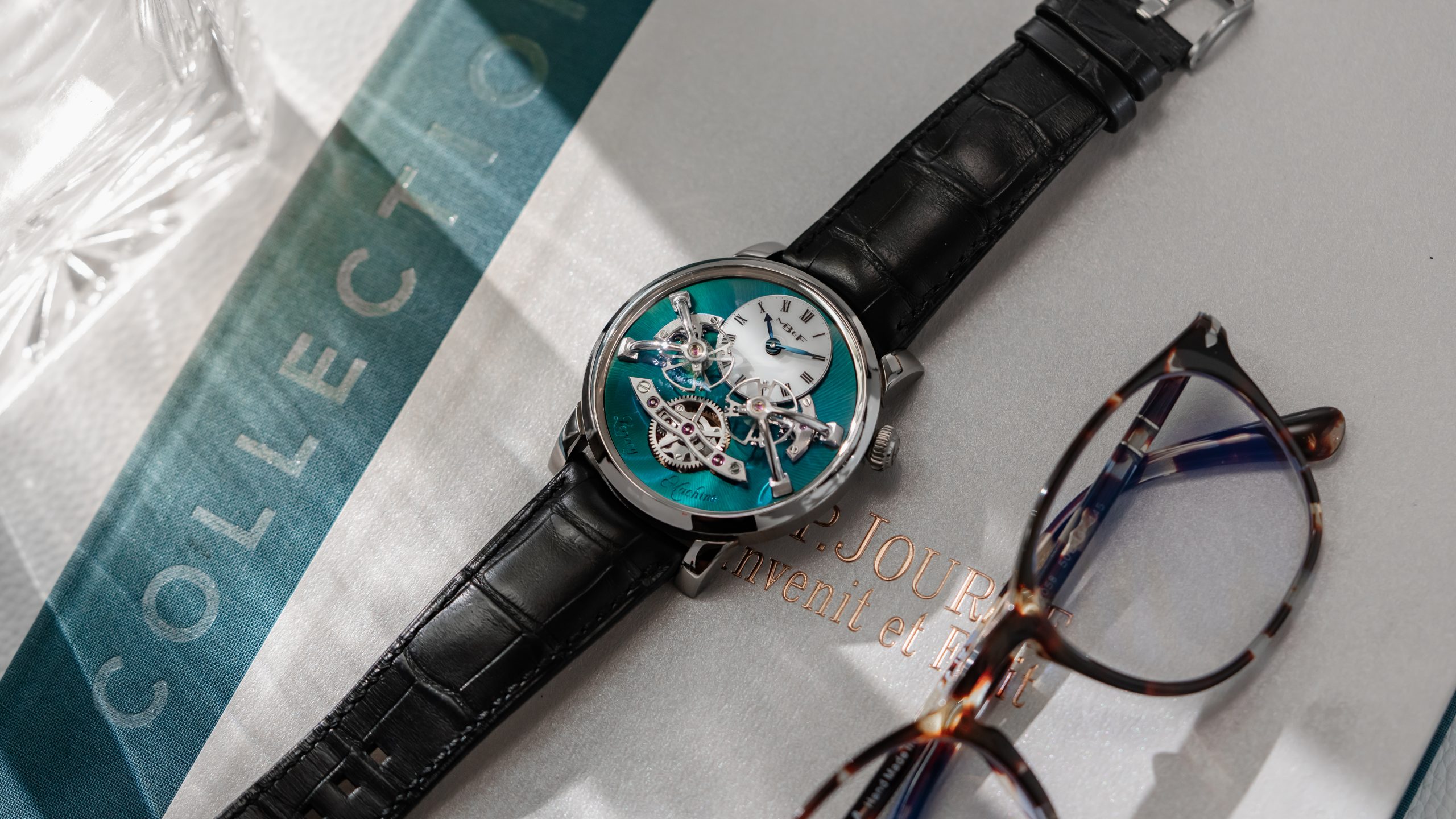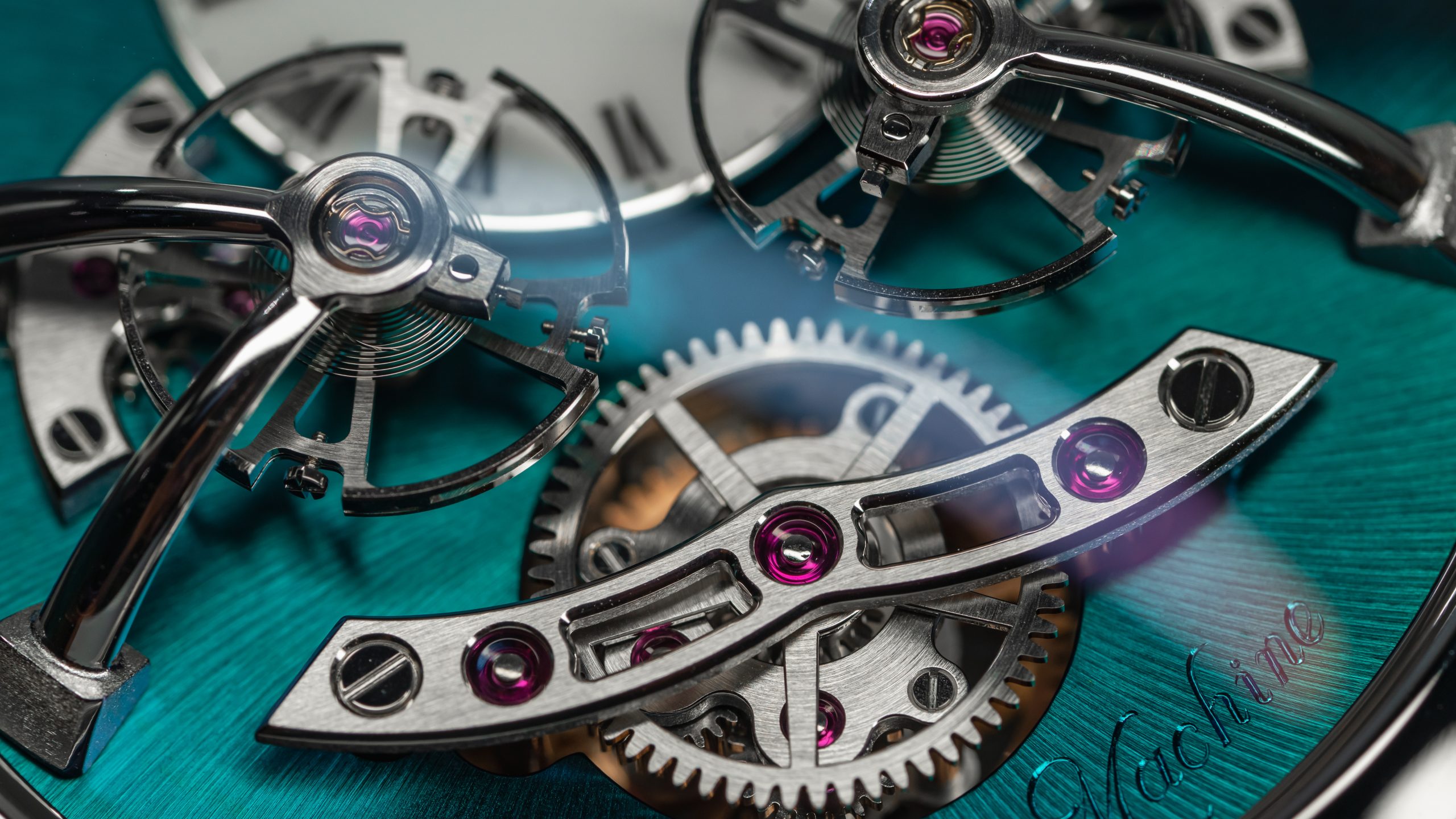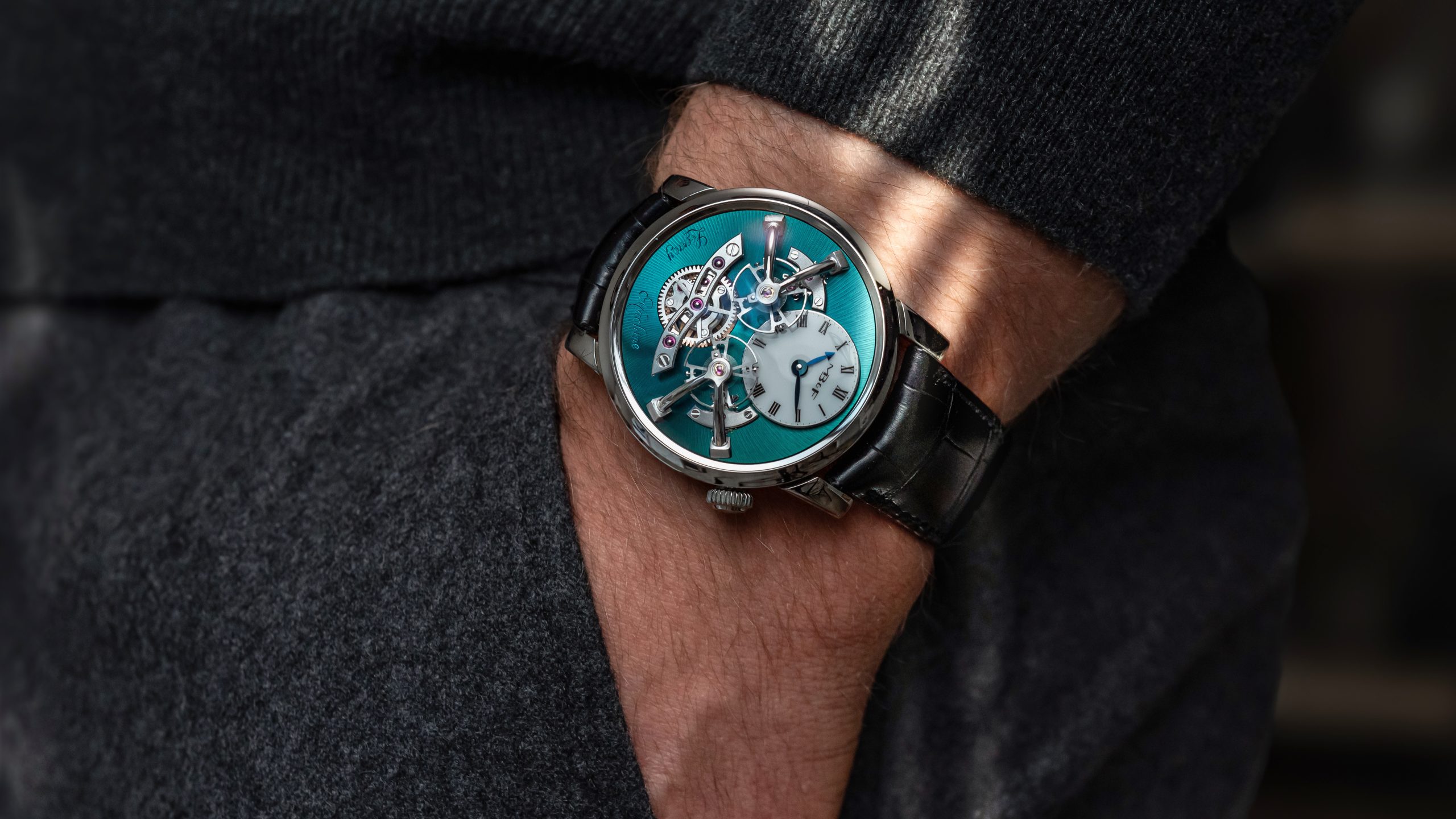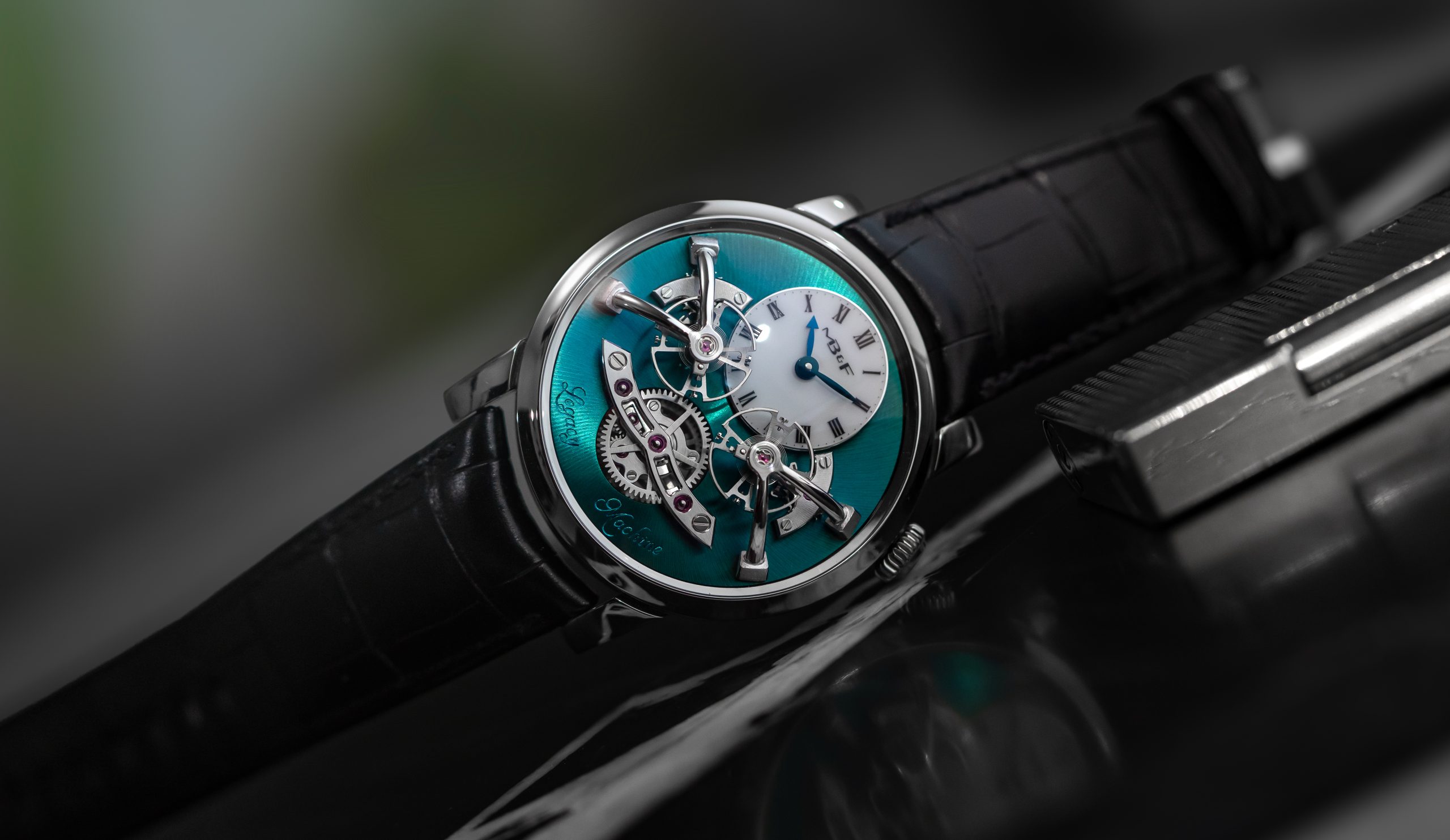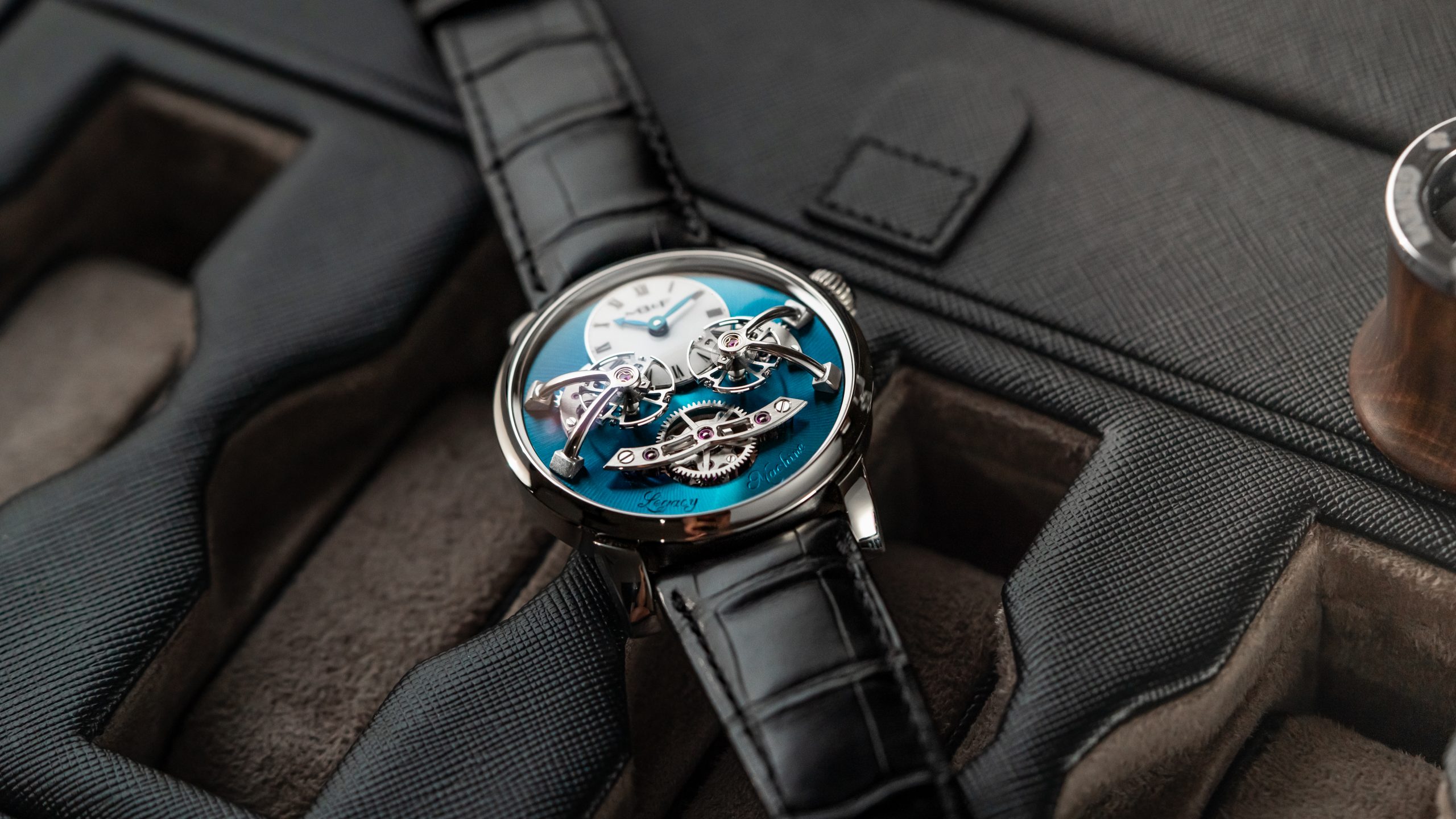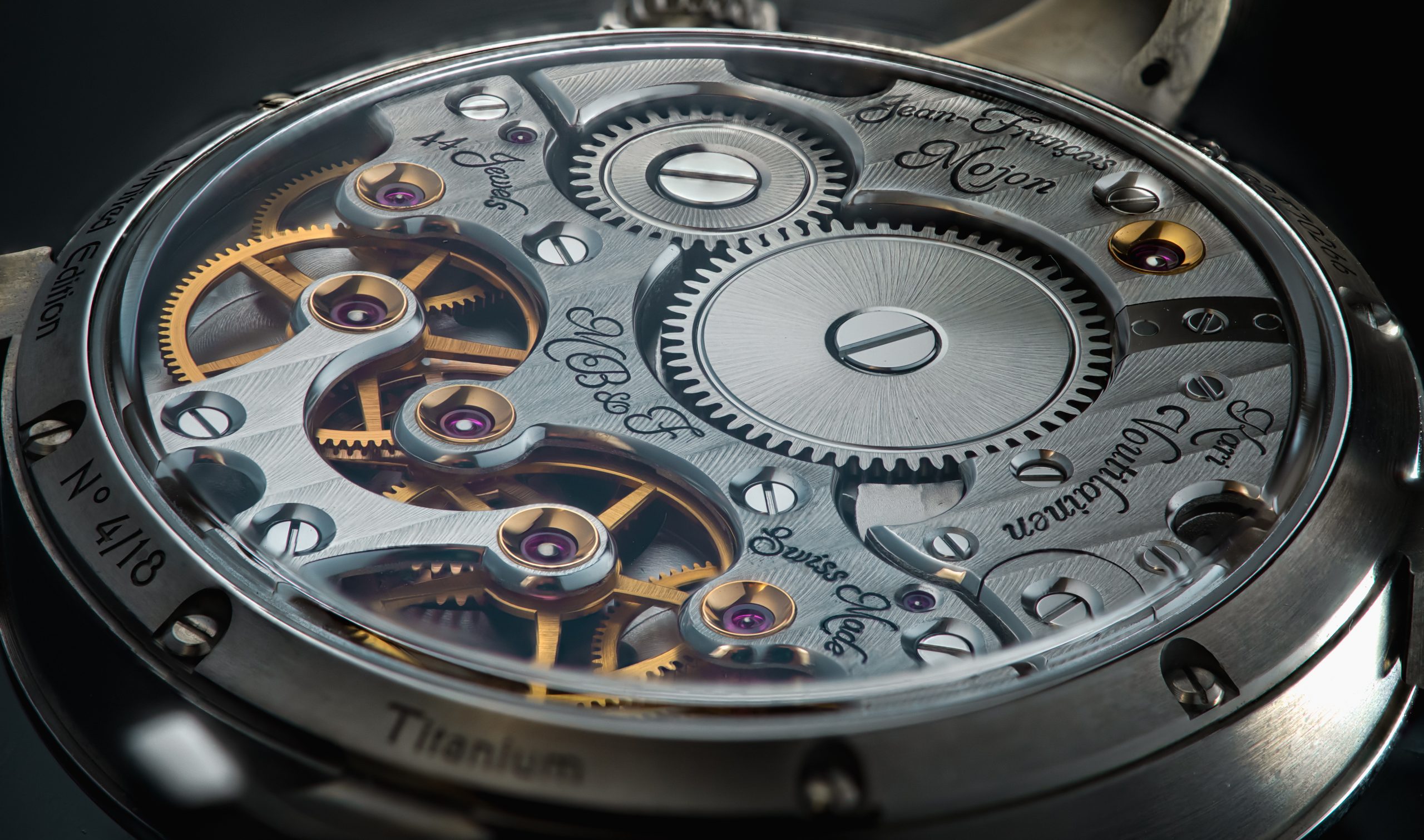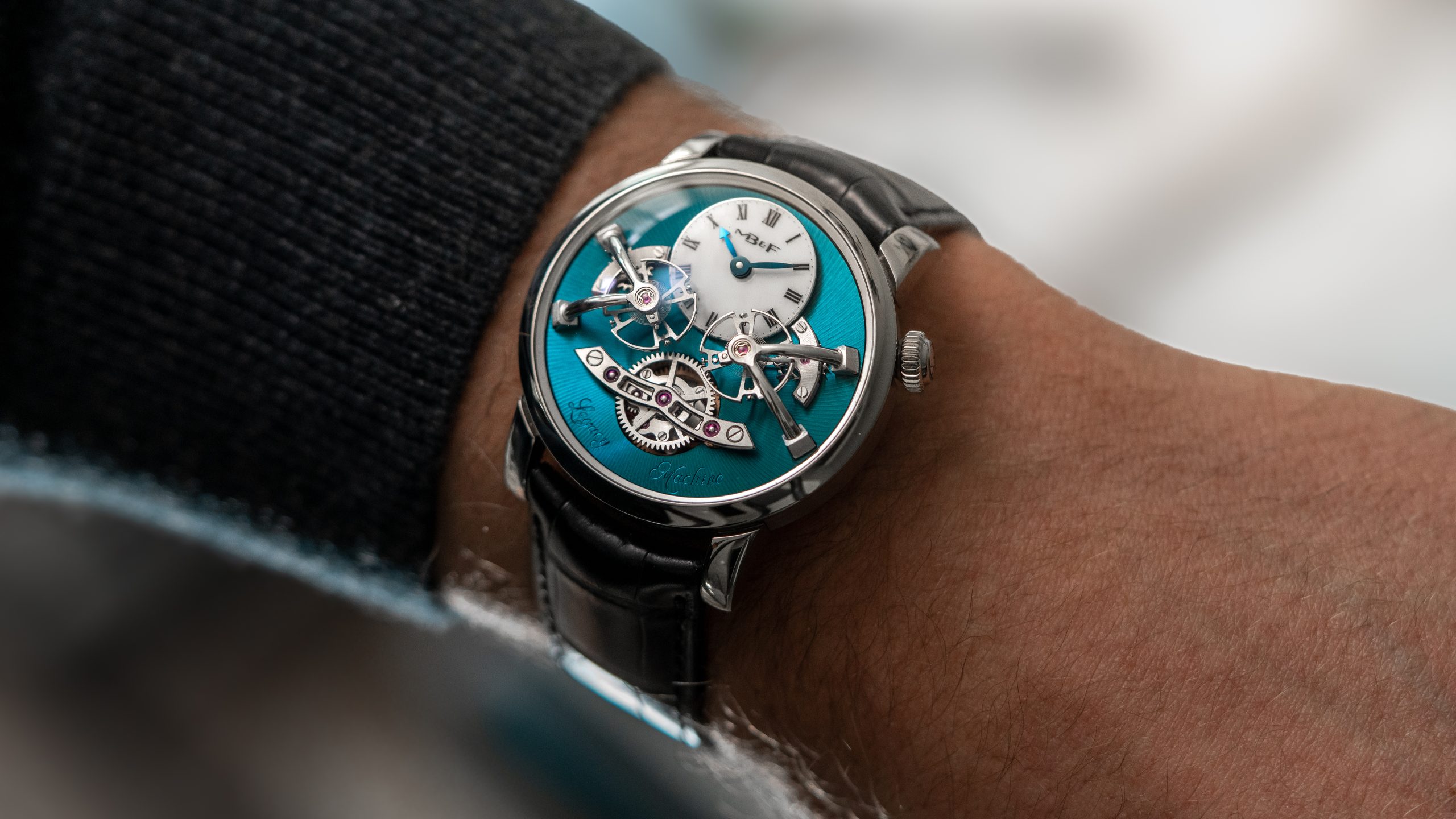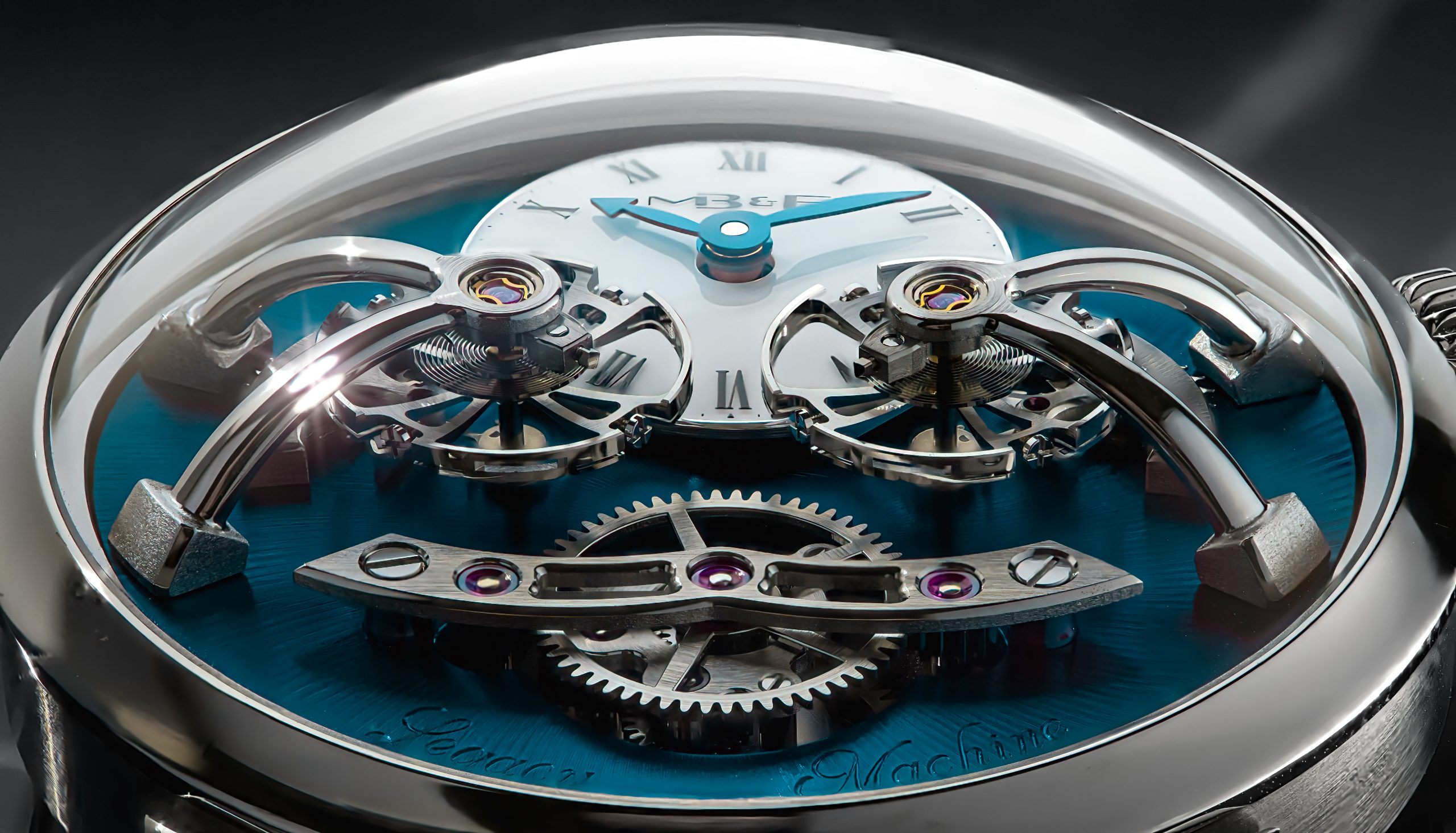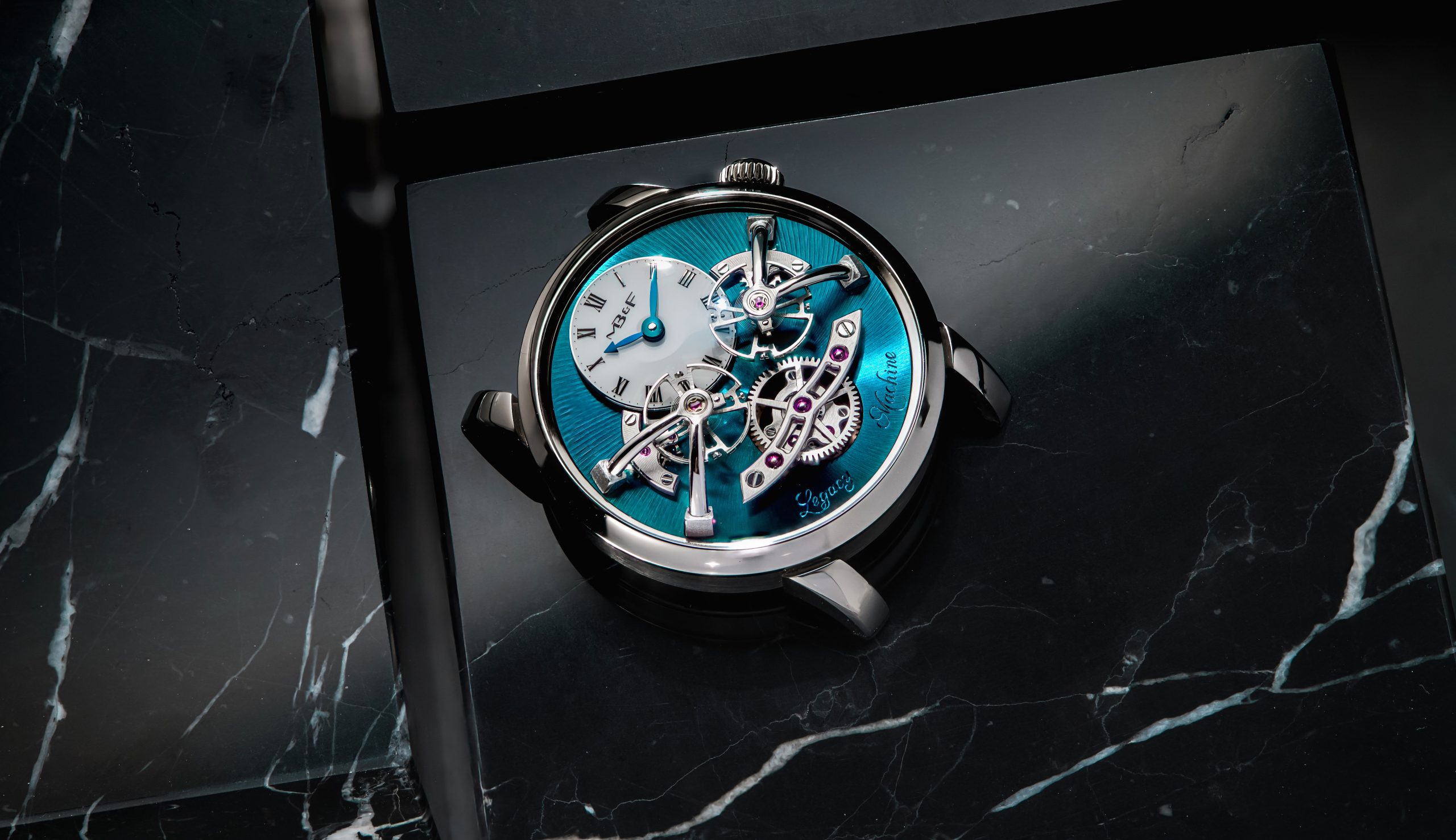There's an oft-repeated proverb at MB&F which goes, 'A creative adult is a child who survived.' But the Legacy Machine 2 makes appeals to both the child-like emotional brain and logical, what Daniel Kahneman would call System 2, brain. Clearly, this artwork has been designed to great dramatic effect: teal, titanium, and technical. But to a greater degree than almost any other Legacy Machine, its architecture is driven by purpose. This is the most dramatic expression of dual balance, differential timekeeping yet designed.
The LM2 is MB&F's approach to the dual balance complication. But it's very unlike the other dual balance watch that likely comes first to mind, FP Journe's Resonance. The Resonance is named after the effect it capitalizes on, where balances are set close to each other to synchronize deliberately. The LM2 takes a different approach, shared by Philippe Dufour, where the two balances are designed to oscillate completely independently. Their impulses are then averaged through a differential wheel opened at 6 on the dial, which outputs a time computed from both escapements to one final gear train.
Büsser believed that resonance would in fact decrease the precision of this calibre, and so carefully calculated the placement of these balances to maximally avoid any resonant effects. The dual arc 'flying' balance bridges are in truth function over form, despite looking the opposite and oozing theatre. Both are placed on an engraved teal larger 'dial', which is the movement's top plate. The smaller brilliant white lacquer dial displays the time, symmetrically balanced by the differential wheel. Upon closer study, one will also note independent escapements are visible on the dial, directly below the balances. This is all contained by one generously domed piece of sapphire coated in an anti-reflective material, married to a 44mm rather classically designed grade-5 titanium case, including a concave bezel. The latter released titanium and palladium editions of the LM2 include a redesigned case which is slightly thinner than the 2013 design, aimed to increase the wearability of this calibre to the extent possible. In this titanium with blue-green dial, just 18 pieces were created. This is nº 4.
The Legacy Machine series honors traditional watchmaking techniques and aesthetic, but imagines them as if created in modernity. The classicism here becomes obvious on the reverse, where Kari Voutilainen's finishing comes to life. The jewels are oversized and set in gold chatons. The anglage is deliberately broad, more difficult to perfectly mirror. All screws are countersunk and black polished. And thanks to its flying balances, which were made possible by Jean-François Mojon's ample engineering ability, there's a sense of space and symmetry that does indeed remind of traditional pocket watch styles on a deeper level than just the freehand engraving or opened gear train. The innovation here is that unlike many 18th and 19th century pocket watches on which it draws inspiration, the LM2 outputs its power to one gear train. This is one movement, where prior dual balance pocket watches always had two gear trains.
The LM2 captures all of MB&F's core principles. This is a movement many said couldn't be done in 2013. But Büsser's determination, coupled with the brilliance of his friends in Kari Voutilainen and Jean-François Mojon, saw it through to completion despite an independent market which was nothing like it is today. This was a watch made possible only by blind ambition, sheer love for the art form, an engineer's ability to never lose his child-like creativity, and teamwork. Not just independent watchmaking but independent balance-making, something only a handful of names have ever attempted and none so dramatically.
